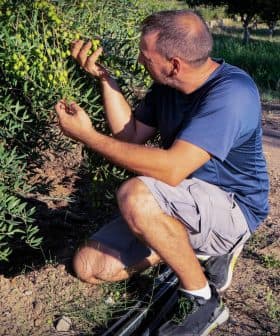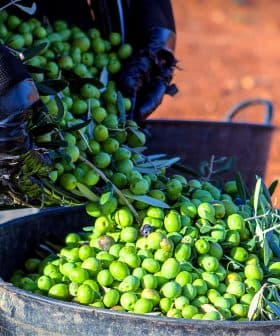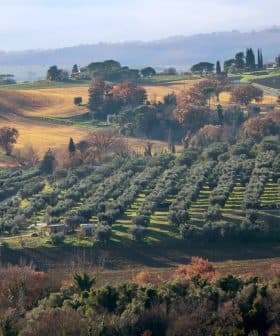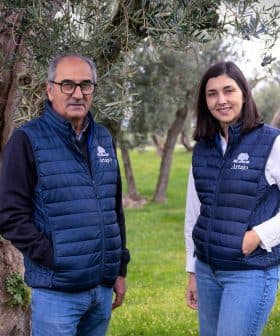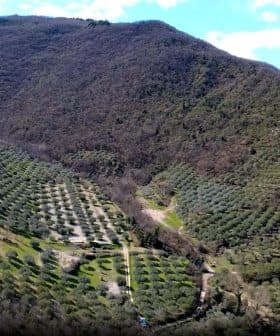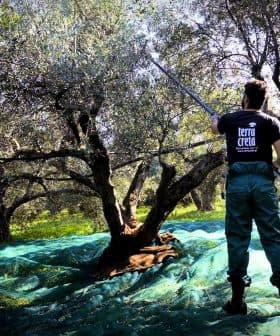 9.9K reads
9.9K readsProduction
Optimism in Italy as Olive Harvest Gets Underway
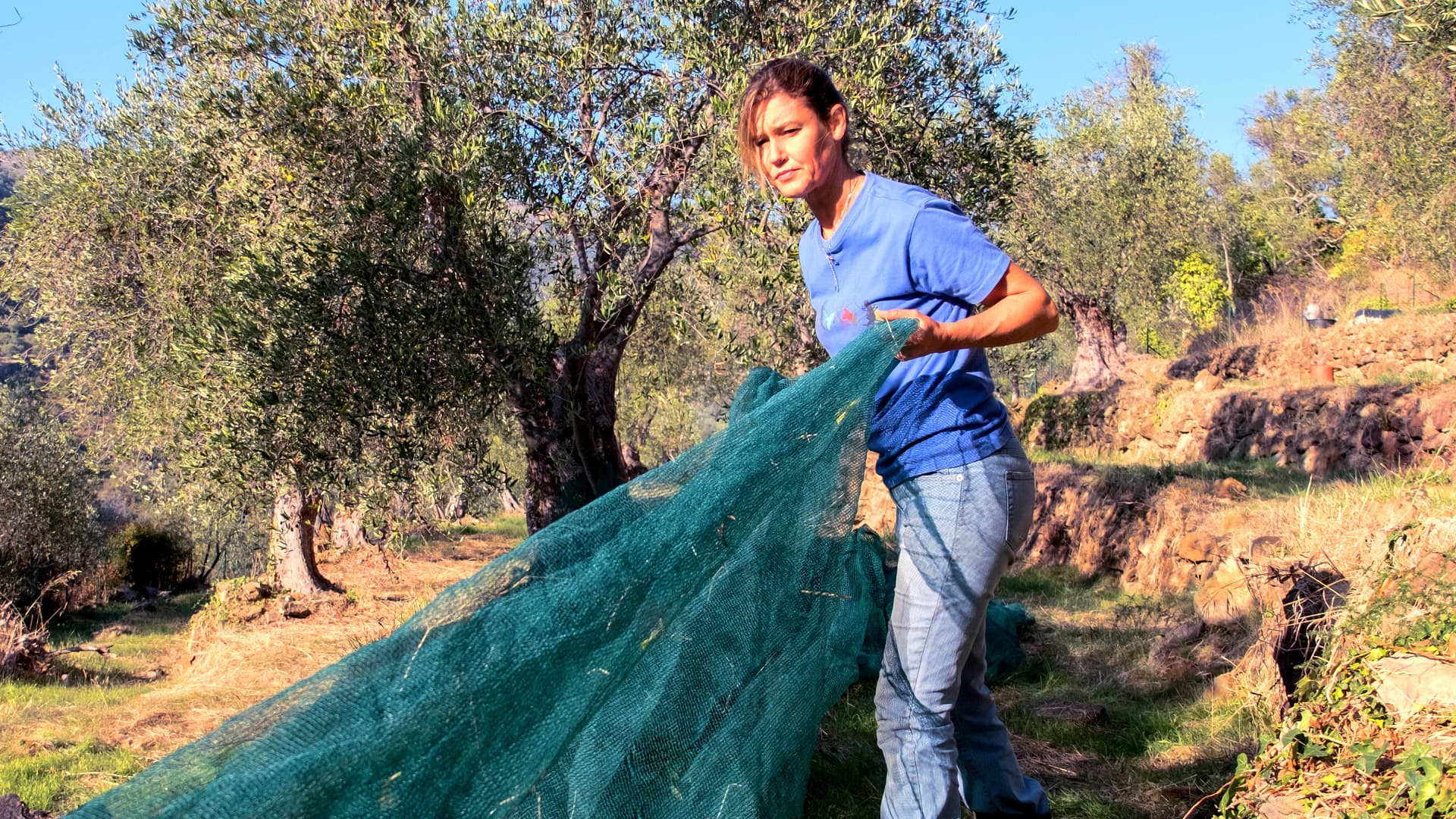
Leading Italian olive oil producers are optimistic about the upcoming harvest, with expectations of increased production compared to the previous year. However, challenges such as hailstorms, pests, and extreme weather conditions have impacted olive oil production in various regions of Italy, leading to decreased yields and concerns about meeting demand in the future.
Leading Italian olive oil producers are optimistic about the upcoming harvest.
Monini, one of Italy’s largest producers, said the country would likely produce more olive oil in the 2023/24 crop year than in the previous. The International Olive Council estimated that Italian production reached 235,000 tons in 2022/23.
“We are expecting lower volumes in most areas of the north and center, but in the south, the season is going well, with overall good conditions in Puglia,” Massimo Ragno, panel leader and purchasing manager at Monini, told Olive Oil Times.
See Also:2023 Harvest UpdatesWhile Ragno estimated that the overall production in Italy could exceed 300,000 tons, the largest producer associations are still working on their estimates.
“Before the actual harvest takes place and the first olive oil yields are confirmed, numbers must be taken cautiously,” Ragno warned.
However, for his 300,000-ton estimate to be realized, the olive oil yield in Puglia would have to exceed 200,000 tons, almost twice last year’s yield.
“Puglia is by far the most significant olive-producing region in Italy; what happens there is destined to affect the whole national output,” Ragno said.
Due to the southern Italian region’s importance to national production, a wave of concern washed over the sector in the last few days when a violent hailstorm hit some areas of southern Italy, including the northern portion of Puglia, where large volumes of olives are grown.
“Rocks of ice that were as large as peaches fell from the sky in a relevant olive growing area, approximately 15 square kilometers,” Ragno said. “Experts in the field, such as insurance technicians, report only partial damages to the olive trees.”
Some farmers hit by the storm told Olive Oil Times of significant but limited damage.
“Extreme weather conditions in the last few days reduced the drupes on the trees between 15 to 20 percent,” Luca Iannone, founder and coordinator of Albori, told Olive Oil Times.
Iannone explained that Albori, located in the northernmost province of Puglia, is still mildly optimistic about the harvest.
“The season was mostly dry, and the trees suffered from some water stress so that emergency irrigation had to be deployed,” he said. “Still, we believe that both quality and quantity will be satisfactory.”
“We also expect a very good season,” Emmanuel Sanarica, the producer behind Ulivè, told Olive Oil Times. “We are seeing quality olives, large and free of damages from pathogens.”
“Still, the season provided us with challenges, as we had intense rainfall during flowering followed by extremely hot weather for the whole summer,” he added. “I know of some areas where those conditions reduced the fruit set and provoked relevant fruit drops, impacting production.”
The Apulian growers and those in other southern regions such as Calabria, Sicily, Basilicata and Campania account for 80 to 90 percent of Italy’s olive oil production.
In Sicily, growers expect olive oil production to be similar to last year, approximately 25,000 tons. The local association Oleum Sicilia noted intense rainfall and strong spring and early summer winds impacted the olive groves.
“We might reach 30,000 tons, but it will still be way lower than the 50,000 tons, which has been the regional average through the years,” said Mario Terrasi, president of the association.
Salvatore Bono, co-owner of Sicily-based Bonolio, told Olive Oil Times that he expects the company to produce 20 percent more olive oil this year than last year.
“The increase and the high quality of our olives will allow us to keep prices steady across the board, something other brands may not be able to replicate,” he said. “As a result, our retail partners and customers have been opting for our premium extra virgin olive oils.”
“The harvest at Bono’s facility will begin the first week of October and is expected to conclude at the end of the month,” Bono added. “In general, for all of our suppliers of olives, the full harvest season typically begins at the same time and extends until the end of November.”
On the peninsula, Campania was also hit by the severe hailstorm that affected Puglia, and several farmers there reported damage. The local branch of the farmer association Coldiretti estimated an overall olive oil output at about 8,000 tons, 40 percent lower than the five-year average.
“Lots of hail fell in Campania just like in Puglia, where crops were devastated,” Claudio De Luca, owner of Case d’Alto, told Olive Oil Times. “As we were not hit, we will start the harvest very soon. We need to see how the transformation yield will go, but we expect to satisfy both quality and volumes.”
In a recent note, the olive oil producers’ association Unaprol remarked on how different conditions unfolded throughout the country during the season.
In the northern and central regions, the harvest is expected to decrease by 20 to 50 percent compared to the previous season.
In the region around Lake Garda and Lake D’Iseo in the north, some farmers report a 50 percent fruit loss compared to the previous season’s bountiful crop.
In those farms, the northernmost areas where the olive tree is cultivated in Italy, marmorated stink bug and olive fruit fly infestations and a few hailstorms significantly reduced the number of the drupes on the olive trees.
Extreme weather events were also cited as the leading cause of an expected drop in olive oil production in Emilia-Romagna and Veneto.
In Liguria, olive growers foresee production decreases ranging from 50 to 70 percent, mostly due to the challenging weather and olive fruit fly infestations.
It is not going much better in central Italy. “In Abruzzo and Umbria, we are seeing a low to medium season unfolding,” Ragno said.
According to the regional producer association Aprol, Umbria’s production is set to shrink by 50 percent compared to the previous campaign, mostly due to very challenging weather and a severe olive fruit fly infestation.
“In the Latium region, we were already expecting the ‘off-year’ for the olive trees,” Ragno said. “Our associates in the region tell us that things might be going a bit better than that in parts of Tuscany.”
In Tuscany, some local growers reported highly challenging situations. Antico Poggiolo, located between Florence and Pistoia in northern Tuscany, told Olive Oil Times of a disappointing season.
“This will not be a good harvest. The fruit set was really low. That, coupled with the olive fruit fly infestation, a very hot season and the lack of rain, contributed to compromise the production,” Silvia Gori, owner at Antico Poggiolo, told Olive Oil Times.
“Climate change in these last few years is seriously challenging agriculture not only from a quality point of view but also for its volumes,” she added. “This will be a season to forget. We estimate a production reduced to zero or at least with such reduced volumes not to be able to fulfill the demand.”
The season is not going much better in central Tuscany. “This is not going to be a rich olive season for Tuscany, as the olives are randomly distributed here and there,” Alberto Morettini, owner of Frantoio di San Giminiano, told Olive Oil Times.
The Consortium for the Protection of the Tuscan Protected Geographical Indication-certified extra virgin olive oil released a note to warn of a 20 to 25 percent decrease in local olive oil that fulfills the criteria of the PGI.
“It was all set to be a generous campaign after the optimal flowering in April,” said Fabrizio Filippi, president of the consortium. “We then had the intense and repeated rainfall in May and June, which charged the soil with water but did not allow good conditions for pollination, so that the passage from flower to fruit in many areas was hindered.”
“After that, we had the scorching hot July and August, which stressed the plants. They ended up dropping their fruits because they could not bring them to ripening,” he added. “Those growers who could irrigate recovered some production; all others faced a way more complicated scenario.”
While Italy appears set to produce more olive oil than in 2022/23, overall production volumes across the Mediterranean basin are likely to fall well below average for the second straight year.
According to Savino Muraglia, award-winning olive oil producer in Puglia and Unaprol vice-president, “bulk olive oil prices have gone up 50 percent, and that will inevitably affect consumers.”
July 2023 data released by Frantoio Italia, a public observatory that tracks olive oil storage in the country, noted that olive oil stocks dropped nearly 25 percent compared to July 2022. Italian olive oil production fell 45 percent to 60,979 tons in the same period.
“The real question is what will happen in six months when the stocks will run out,” Muraglia warned.


